
Penang is a Malaysian state located on the northwest coast of Peninsular Malaysia along the Strait of Malacca. It has two parts: Penang Island, where the capital city, George Town, is located, and Seberang Perai on the Malay Peninsula. These two halves are physically connected by the Penang Bridge and the Second Penang Bridge. The state shares borders with Kedah to the north and east, and Perak to the south.

The Malayan Union was a union of the Malay states and the Straits Settlements of Penang and Malacca. It was the successor to British Malaya and was conceived to unify the Malay Peninsula under a single government to simplify administration. Following opposition by the ethnic Malays, the union was reorganised as the Federation of Malaya in 1948.

The Federation of Malaya, more commonly known as Malaya, was a country of what previously had been the Malayan Union and, before that, British Malaya. It comprised eleven states – nine Malay states and two of the Straits Settlements, Penang and Malacca. It was established on 1 February 1948.
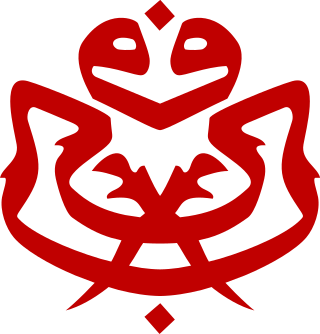
The United Malays National Organisation or less commonly PEKEMBAR), is a nationalist right-wing political party in Malaysia. As the oldest national political party within Malaysia, UMNO has been known as Malaysia's "Grand Old Party".

The Malaysian People's Party is a political party in Malaysia. Founded on 11 November 1955 as Partai Ra'ayat, it is one of the older political parties in Malaysia and traces its pedigree to the anti-colonial movements from the pre World War II period like the Kesatuan Melayu Muda.

Malaysian Chinese, Chinese Malaysians, or Sino-Malaysians are Malaysian citizens of Han Chinese ethnicity. They form the second-largest ethnic group in Malaysia, after the Malay majority, and constitute 22.4% of the Malaysian total population. Today, Malaysian Chinese form the second largest community of Overseas Chinese in the world, after the Thai Chinese. Malaysian Chinese maintain a significant and substantial presence in the business sector of the Malaysian economy.
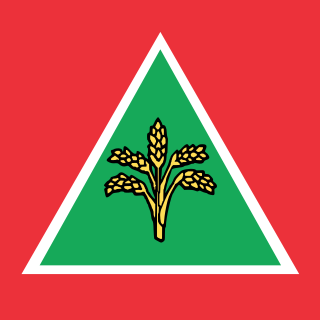
The Malaysian People's Movement Party is a liberal political party in Malaysia.Formed in 1968, Gerakan gained prominence in the 1969 general election when it defeated the ruling Alliance Party in Penang and won the majority of seats in Penang's state legislature. In 1972, Gerakan joined the Alliance Party, which later became Barisan Nasional (BN), the ruling coalition of Malaysia until 2018. It has been a member of Perikatan Nasional (PN) since 2021.
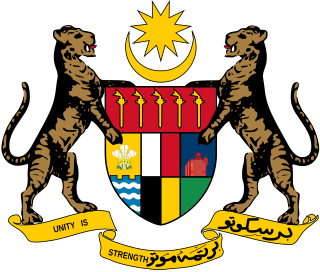
Malaysian nationality law details the conditions by which a person is a citizen of Malaysia. The primary law governing nationality requirements is the Constitution of Malaysia, which came into force on 27 August 1957.

The history of the modern state of Singapore dates back to its founding in the early 19th century; however, evidence suggests that a significant trading settlement existed on the island in the 14th century. The last ruler of the Kingdom of Singapura, Parameswara, was expelled by the Majapahit or the Siamese before he founded Malacca. Singapore then came under the Malacca Sultanate and subsequently the Johor Sultanate. In 1819, British statesman Stamford Raffles negotiated a treaty whereby Johor would allow the British to locate a trading port on the island, ultimately leading to the establishment of the Crown colony of Singapore in 1867. Important reasons for the rise of Singapore were its nodal position at the tip of the Malay Peninsula flanked by the Pacific and Indian Oceans, the presence of a natural sheltered harbour, as well as its status as a free port.

The State of Penang, one of the most developed and urbanised Malaysian states, is located at the nation's northwest coast along the Malacca Strait. Unlike most Malaysian states, the history of modern Penang was shaped by British colonialism, beginning with the acquisition of Penang Island from the Sultanate of Kedah by the British East India Company in 1786. Developed into a free port, the city state was subsequently governed as part of the Straits Settlements, together with Singapore and Malacca; the state capital, George Town, briefly became the capital of this political entity between 1826 and 1832. By the end of the 19th century, George Town prospered and became one of the major entrepôts in Southeast Asia.

The All-Malaya Council of Joint Action (AMCJA) was a coalition of political and civic organisations in Malaya formed to participate in the development of a constitution for post-war Malaya in preparation for independence and to oppose the Constitutional Proposals for Malaya which eventually formed the basis of the Federation of Malaya Agreement.
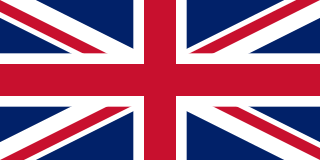
The British Military Administration (BMA) was the interim administrator of British Malaya from August 1945, the end of World War II, to the establishment of the Malayan Union in April 1946. The BMA was under the direct command of the Supreme Allied Commander South East Asia, Lord Louis Mountbatten. The administration had the dual function of maintaining basic subsistence during the period of reoccupation, and also of imposing the state structure upon which post-war imperial power would rest.
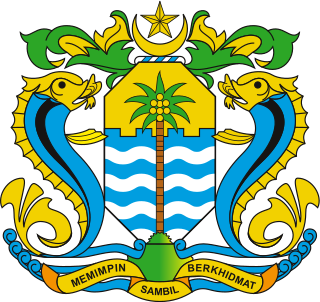
The Penang Island City Council is the local government that administers the city of George Town, which includes the entirety of Penang Island. The city council, which has jurisdiction over an area of 306 km2 (118 sq mi), falls under the purview of the Penang state government.

The Royal Malaysia Police trace their existence to the Malacca Sultanate in the 1400s and developed through administration by the Portuguese, the Dutch, modernization by the British beginning in the early 1800s, and the era of Malaysian independence.

The Alliance Party was a political coalition in Malaysia. The Alliance Party, whose membership comprised United Malays National Organisation (UMNO), Malaysian Chinese Association (MCA) and Malaysian Indian Congress (MIC), was formally registered as a political organisation on 30 October 1957. It was the ruling coalition of Malaya from 1957 to 1963, and Malaysia from 1963 to 1973. The coalition became the Barisan Nasional in 1973.

The Asian Socialist Conference (ASC) was an organisation of socialist political parties in Asia that existed between 1953 and 1965. It was established in an effort to build a Pan-Asian multinational socialist organization, clearly independent from earlier European colonial centres, yet free from the new superpowers of the Cold War.
The Selangor Labour Party was a political party in Selangor, Malaya. The party was founded on 22 December 1951. As of 1953, K.C. Chia was the chairman of the party, A. Tharmalingam the secretary and M. Arokiasamy the vice chairman. The party was represented in the Federal Legislative Council by Wong Pak Choy.

Heah Joo Seang was a Malayan politician, business leader, rubber magnate, philanthropist and especially a supporter of education. Malaysia, as it has since become, only existed after Joo Seang's death. His contributions span three distinct periods in the country's history: the British Malaya period, the Malayan Union period, and the Federation of Malaya period.

The Malayan Peoples' Socialist Front or better known as Socialist Front (SF) or Barisan Sosialis (BS) was a left-wing coalition of Malaysian socialist parties. It was among the longest-standing opposition coalitions in Malaysian general election history. The coalition was formed by Parti Rakyat Malaya (PRM) and the Labour Party of Malaya on Hari Merdeka in 1957. In 1964, the National Convention Party (NCP) joined the coalition. PRM left the coalition in 1965 and NCP soon become inactive. The Labour Party, the only remaining party in SF, abandoned it on 10 January 1966 and reverted to its own banner.

















